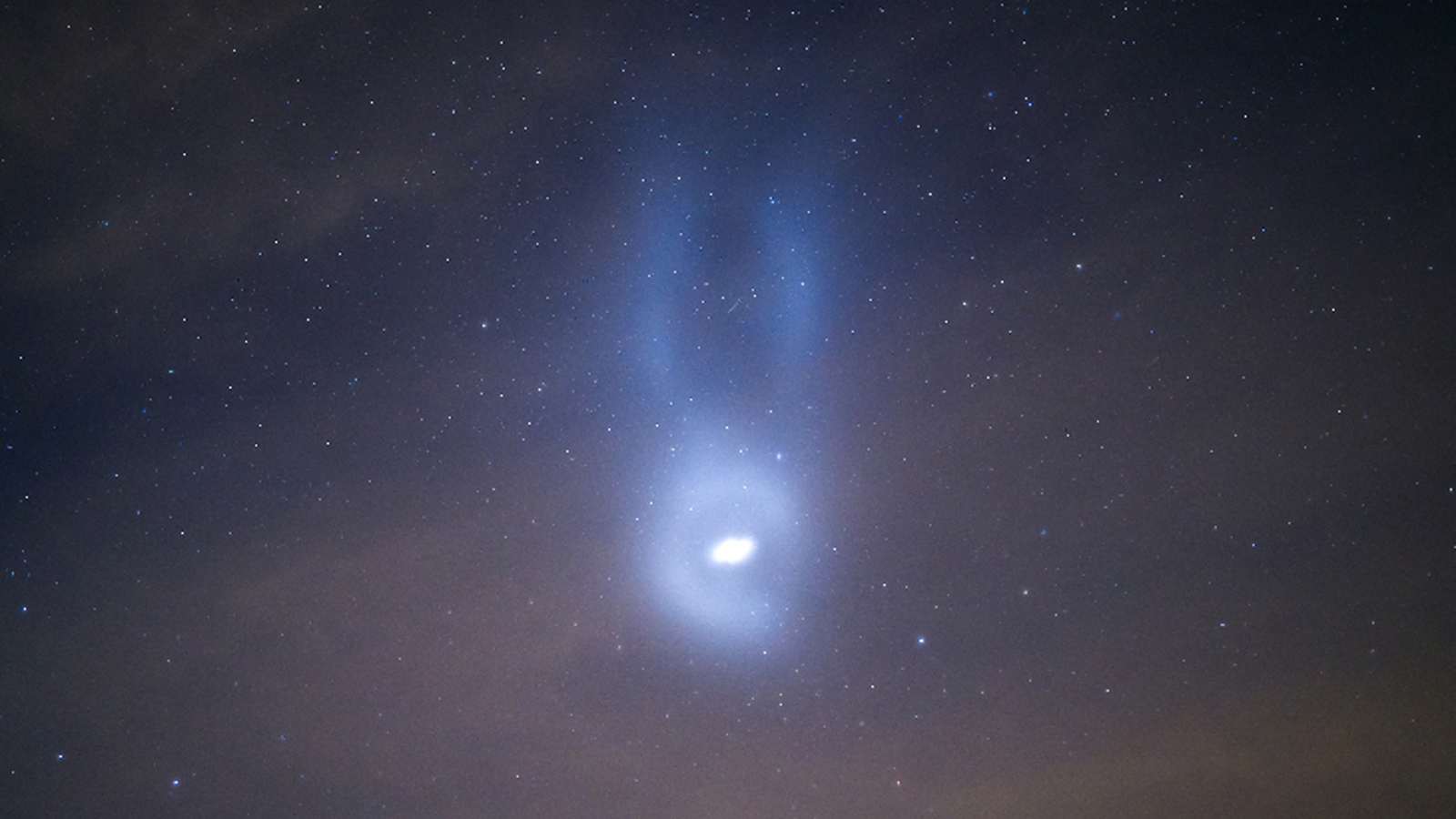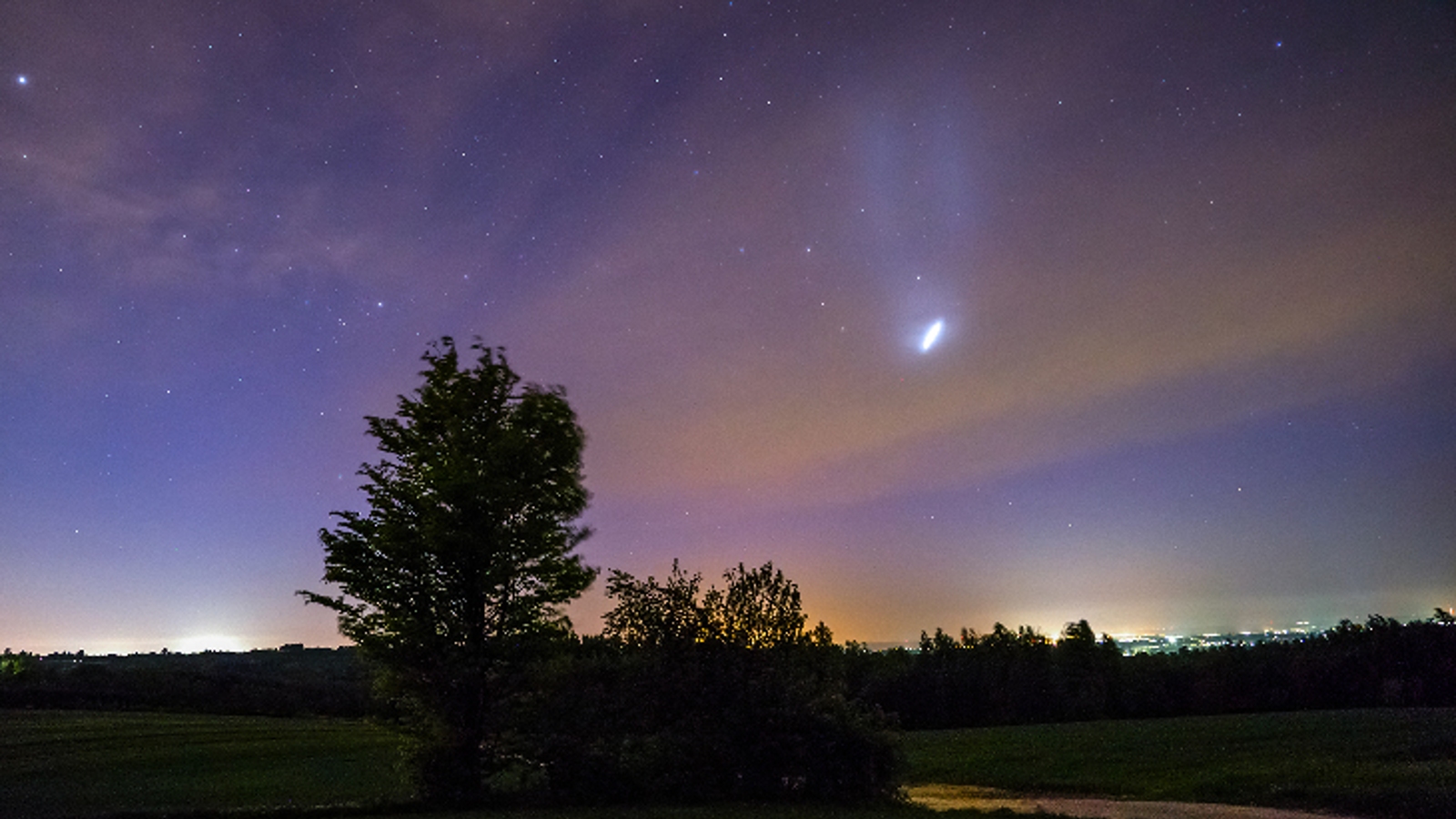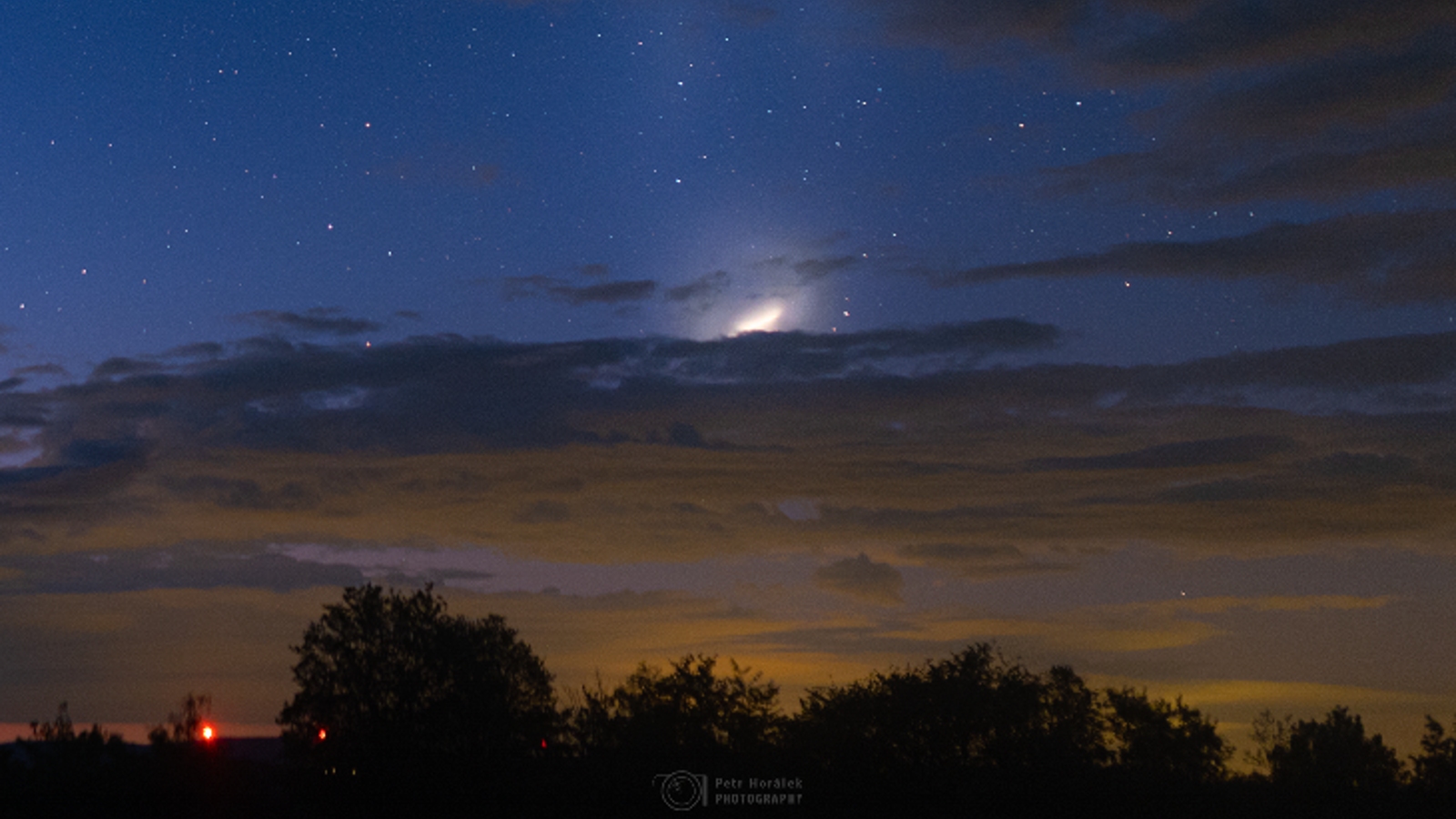Horned 'SpaceX spiral' photobombs auroras over Europe in 1st-of-its-kind sighting
Aurora-hunting photographers were surprised to spot a misshaped SpaceX spiral with ethereal horns over Europe during a recent geomagnetic storm.

A bizarre, "horned" spiral of light recently photobombed a vibrant aurora display above Europe. The misshaped luminous swirl was painted in the sky by a dying SpaceX rocket, but it is unlike any light show we have seen before.
The stunning galaxy-like spiral appeared above parts of Poland, Lithuania and the Czech Republic on May 2 at around 9:00 p.m. GMT (4:00 p.m. EDT), Spaceweather.com reported. Around 90 minutes earlier, a SpaceX Falcon 9 rocket carrying a pair of Earth-observation satellites launched from the Vandenberg Space Force Base in California.
The swirling light show is an example of what researchers commonly call "SpaceX spirals," which are made up of fuel dumped in space by Falcon 9 rockets shortly before they fall back to Earth and burn up in the atmosphere. The fuel freezes into tiny crystals that reflect sunlight and form the shape of a spiral because the rockets spin as they discard it.
Normally, these spirals have a perfect vortex shape. But photos of the recent spiral above Europe show this spiral had two faint, horn-like pillars of light, which have not been seen in any previous spirals. It is not clear what caused the horns to form, but it is likely tied to how the rocket dumped its fuel, Spaceweather.com reported.
The light show only lasted for around 10 minutes before disappearing completely as the frozen fuel began to disperse.

This spiral coincided with a strong G3 geomagnetic storm that began on May 2 after a coronal mass ejection from the sun smashed into Earth's magnetic field, according to the National Oceanic and Atmospheric Administration (NOAA). As a result, the northern lights can also be seen in some of the images. One photographer even captured a timelapse video of the spiral as the aurora danced in the sky.
Sign up for the Live Science daily newsletter now
Get the world’s most fascinating discoveries delivered straight to your inbox.
SpaceX spirals are becoming more common in the night sky as the company has increased the number of launches over the last few years.
Recently, a massive white SpaceX spiral photobombed the northern lights above Iceland in March. Similarly, stunning swirls were also spotted above Alaska in April 2023 and over Hawaii in April 2022.

But SpaceX spirals aren't the only atmospheric light shows caused by the company's Falcon 9 rockets.
As the dying spacecraft reenter the atmosphere, they release chemicals that can react with ionized oxygen in the upper atmosphere, causing the molecules to recombine into normal atoms and temporarily emit bright red light like an aurora. Scientists call this an "atmospheric hole," and such holes are also becoming more common as the rate of SpaceX launches rises.
In March, a photographer managed to capture a timelapse photo of a Falcon 9 rocket's reentry burn, which created a strange dashed line in the sky.

Harry is a U.K.-based senior staff writer at Live Science. He studied marine biology at the University of Exeter before training to become a journalist. He covers a wide range of topics including space exploration, planetary science, space weather, climate change, animal behavior and paleontology. His recent work on the solar maximum won "best space submission" at the 2024 Aerospace Media Awards and was shortlisted in the "top scoop" category at the NCTJ Awards for Excellence in 2023. He also writes Live Science's weekly Earth from space series.









